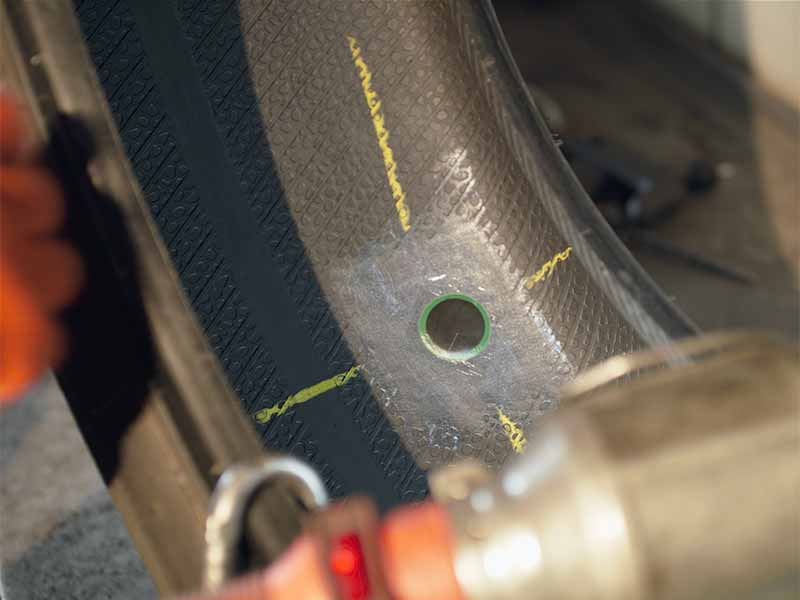Liability is the main reason your local tire shop will not repair borderline patchable flat tires. Your local tire professional will always make the safest choice to ensure that not only are you safe, but they won’t get sued if the unthinkable were to happen.
When Can A Tire Not Be Patched?
A tire can not be patched if the puncture is in the sidewall or shoulder area of the tire. Also, larger punctures or multiple punctures that are too close together may not be able to be patched.
Other situations that can not be patched are damage from driving on a flat tire, very worn tires, damaged tires with tread separation, broken belts, or dry rot.
Finally, a run-flat tire should not be patched if driven on when uninflated or significantly underinflated.
Tires are often repairable, but safety is the primary concern when determining if a tire can be repaired.
Let’s take a closer look.
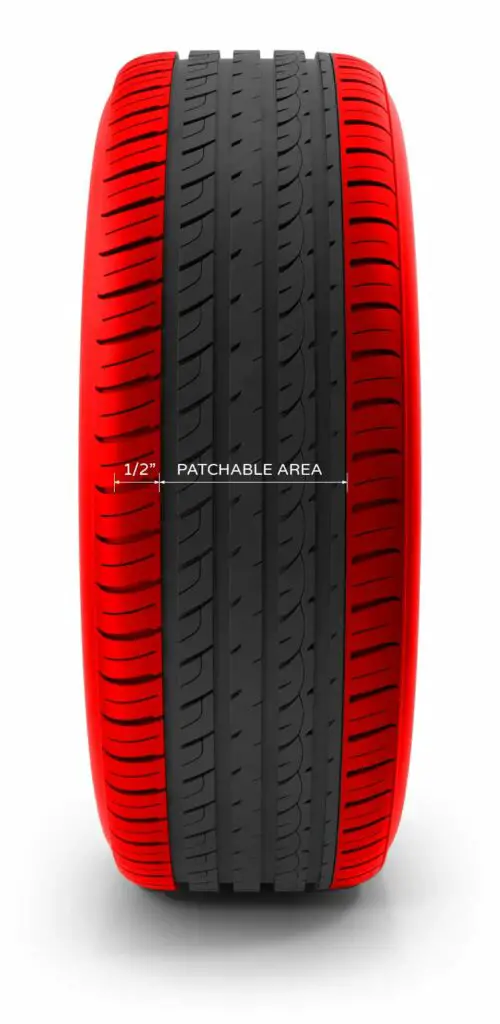
Sidewall Punctures
Tire sidewalls stretch and flex with every revolution of your wheel. Not only that, but the forces a tire is subjected to during cornering are even greater.
Due to their required flexibility, a tire patch will eventually fail in this location. The stress and strain are too much for adhesives to hold up for an indefinite amount of time.
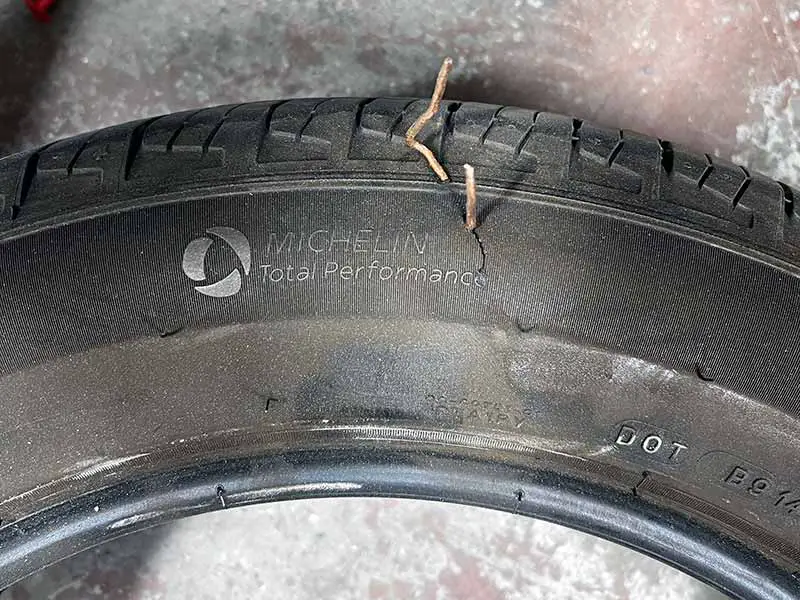
Tire punctures can be patched in the center part of the tread because this area flexes very little compared to the sidewalls. They also are reinforced with steel belts that help the tread surface remain flat and stay in better contact with the pavement.
Shoulder Area Punctures
A tire shoulder is not much different than the sidewall of your tire. It’s much closer to the steel belts under the tread face, but it still does not have the same structural support inside the rubber that would keep it from flexing far too much for a patch to remain adhered for an extended period.
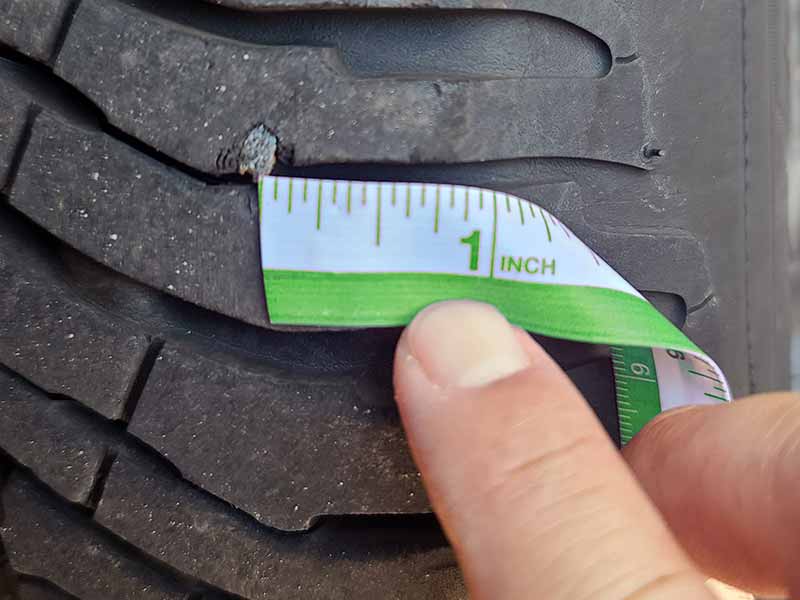
The steel belts within the structure of your tire extend to the sidewall and help provide some strength and limit flex. But this amount of support is not enough to be safely patched.
How Close To The Sidewall Can A Tire Be Patched?
For a puncture to be safely repaired, it must be at least 1/2″ from the edge of the steel belts within your tire.
Large Punctures
Large holes in your tire can not be safely repaired since they will have compromised the tire’s structure too much to ensure that the patch will hold and the tire will not begin to break down over time at the puncture site.
How Big Of A Hole Can You Patch In A Tire?
For a puncture to be safely repaired, it must be smaller than 1/4″ in diameter.
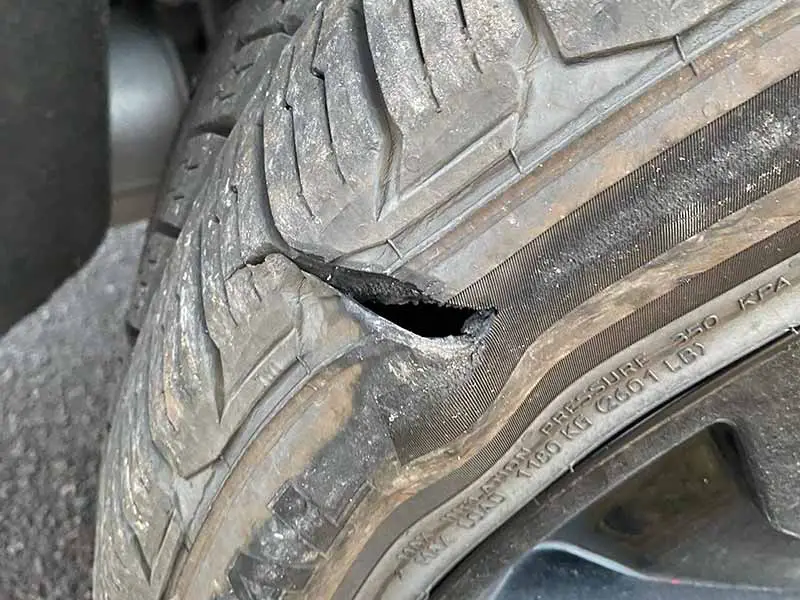
Multiple Punctures
If you have a tire with multiple small punctures, it may be able to be repaired, but there are situations when having more than one puncture in your tire may make it unsafe.
Each tire repair shop will have guidelines they follow that may be unique. While many situations are relatively consistent across multiple shops, there is the most variability in how multiple punctures are handled.
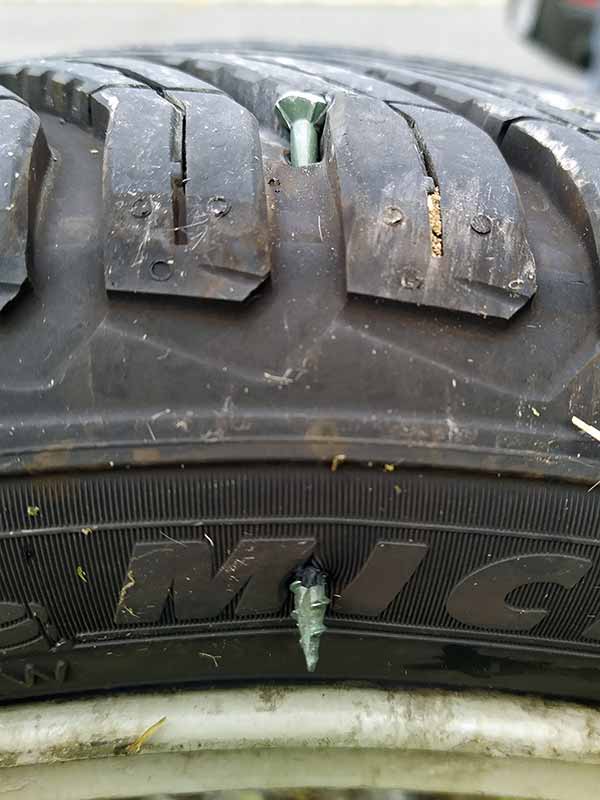
The following are some situations that can prevent a tire repair shop from attempting to patch your tire when there are multiple punctures:
Distance Between Punctures
Some shops will require the distance between punctures to be 16″ or more, while others just want to ensure that the tire patches won’t overlap so that they can adequately bond to the inside of the tire.
Multiple Punctures Across The Width
Most shops won’t repair a tire if multiple punctures are across the same position along the tire’s width. The reason for this is that the tire’s structural integrity is compromised when there are multiple punctures where the tire comes into contact with the road surface simultaneously.
This can lead to too much flex underneath the tread area and cause patches and the tire itself to fail over time.
Number Of Punctures
Some tire repair shops may refuse to patch a tire that has already been fixed. Others will only allow for a tire to be patched twice. And some others will be happy to repair your tire multiple times as long as the punctures are far enough apart from each other.
Damage From Driving On A Flat Tire
Any time someone attempts to drive any distance on a flat tire, the tire’s sidewall will suffer significant damage. If you have a flat tire, you shouldn’t try to drive on it for even a short distance if you can do so safely.
If you experience a sudden loss of air pressure while driving, you should pull over to the side of the road as soon as you can safely.
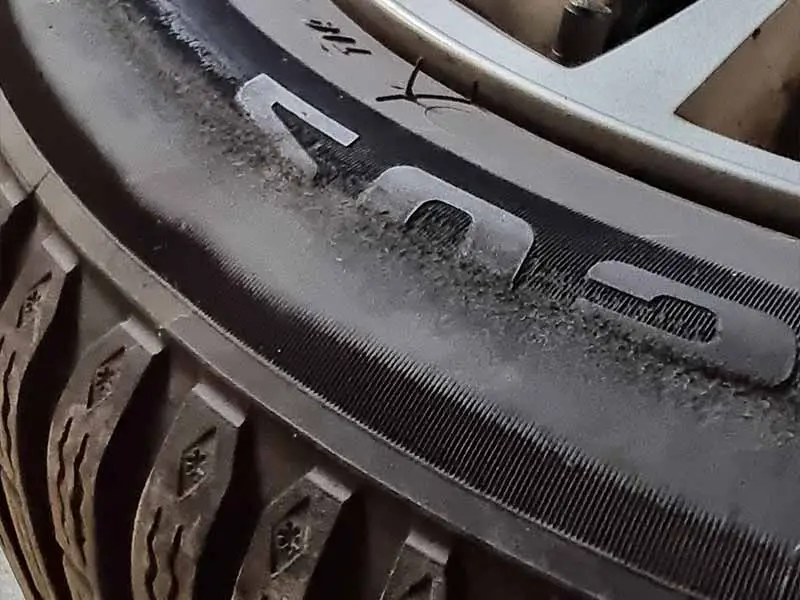
While a sudden loss of air pressure that results in a completely flat tire is likely a blowout that can’t be patched, a low air pressure warning from your tire pressure monitoring system doesn’t necessarily mean that is the case.
When a tire is driven on, even for a short distance, the rim of the wheel folds the tire’s sidewall in half at the bottom of the wheel. When this happens, the sidewall begins to heat up dramatically. If you’ve ever bent a paper clip back and forth repeatedly until the metal fatigued and snapped, this is the same process.
Your tire can take a lot of abuse and even handle the short trip to the side of the road if you lose air pressure while driving and have to move to the roadside. But driving any distance beyond this will quickly cause tire damage that can not be repaired.
Excessively Worn Tires
Once a tire has been worn down to 2/32″ or less of tread depth at any point across the tread pattern, you should replace your tire. A tire repair shop will refuse to fix a flat tire on any tire that doesn’t have enough tread remaining for it to be considered safe to drive on.
Run-Flat Tires
Run-Flat tires can be patched if they haven’t been driven on while there is no air in them. Run flats are great since you can drive on them when their flat, as the name implies, for up to 50 miles at up to 50 miles per hour.
It can be challenging to determine if a run-flat tire has been driven on without enough pressure, so some shops will refuse to patch them altogether.
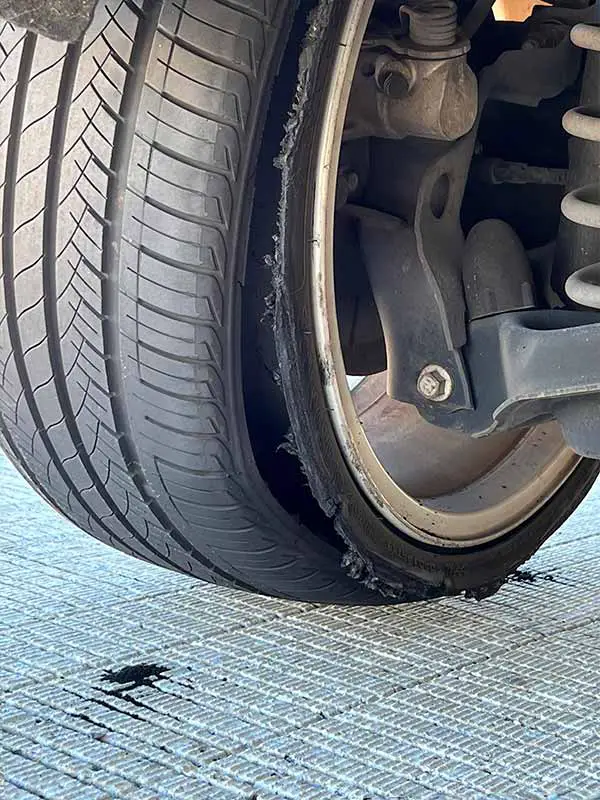
Others would patch them if you could drive into their shop with the tire only having a slow leak due to road debris such as nails, screws, or other small objects the rubber can form a seal around.
Other Dangerous Damage
It’s unsafe to repair tires with significant damage other than that caused by the puncture you came in to have patched. If your tire is suffering from any of the following issues, you can expect the service tech to come back to you with the recommendation to replace it with a new tire.
Sidewall Bulges
A bulge in the sidewall of your tire is a sign of significant damage. When there is structural damage, it can lead to a catastrophic blowout. No reputable tire shop will repair a flat on a tire with this type of damage.
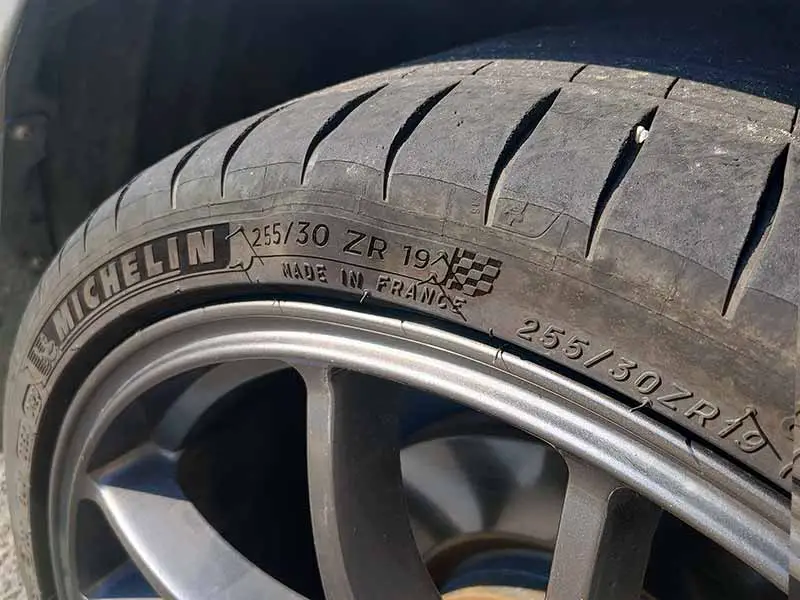
Tread Separation
If the tread has begun to separate from the tire’s body, you have more severe damage than a simple puncture. When the tread begins to separate from the tire body, your tire breaks down, and the steel cords lose their ability to maintain their shape.
Broken Belts
Broken cords and belts within the body of your tire will cause bulges and deformations that make it difficult for the tire to maintain contact with the road surface properly. This damage will continue to break down over time, and the tire will eventually fail.
Dry Rot
The rubber your tires are made of loses elasticity over time and will eventually begin to dry out and crack. This is due to exposure to ultraviolet rays from the sun and ozone in the atmosphere that reacts with the rubber compounds.
Tires typically last 7 to 10 years before they begin to dry rot to the point of needing replacement. If your local tire shop identifies significant sidewall cracking that indicates your tire has reached the end of its usable life due to age, they’ll let you know and refuse to patch it.
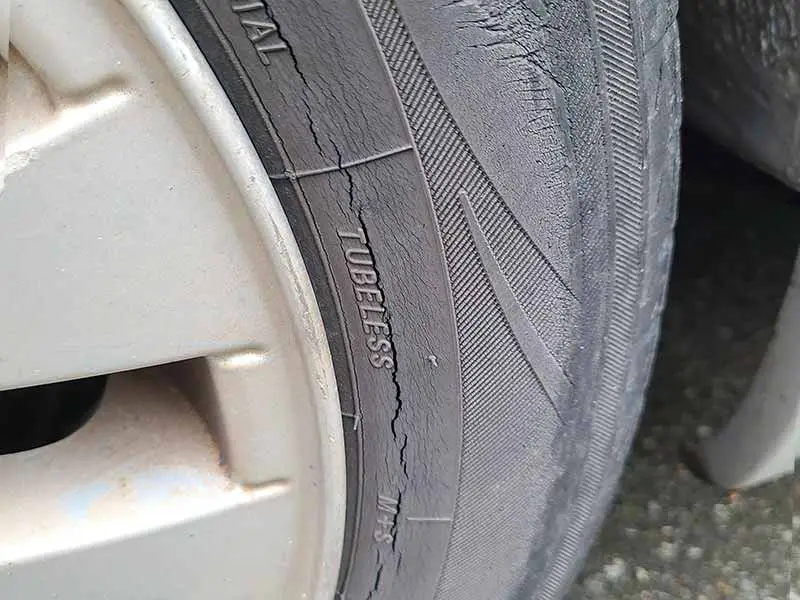
How Long Will A Professionally Patched Tire Last?
Properly patched tires can easily last for the remaining life of your tire. A small hole toward the middle of your tread pattern is easily repairable and has no cause for concern once fixed.
Tire plugs are not meant to be permanent fixes and should be replaced with a proper tire patch as soon as possible. While a plug can last a long time, it isn’t considered the appropriate method for repairing a tire and is only meant for temporary plugging of a leak.
Resources
Below are some links you may find helpful when learning about tires
Final Thoughts
Yes, there are many situations where a tire can not be patched, but this is for an excellent reason. A repaired tire should be able to continue to provide you with sound, safe performance and continue to be able to handle everything you throw at it daily.
Also, your local tire shop has to look after themselves, and if you were to get injured due to neglecting to follow safe tire repair practices, they could get sued and put out of business.
It’s always best to opt for new tires if there is any question about whether a tire repair is safe.
Good luck and happy motoring.
